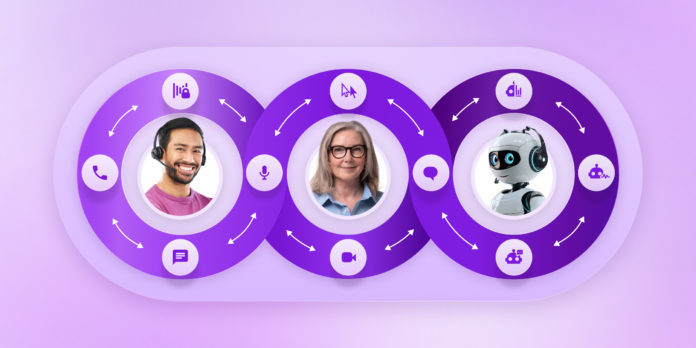There’s no bigger opportunity for insurance companies to improve their communication than in the claims process.
When a policyholder has incurred a loss, it leads to a critical series of touchpoints: From the first notice of loss (FNOL) to settlement, claims communication is paramount for driving loyalty and retention. It’s where the rubber meets the road in the insurance carrier and customer relationship.
Claims Interactions Are Evolving
How claimants interact with and receive information from their carrier has been changing. Many companies now offer digital FNOL, enabling policyholders to begin the claim process on their website or through a mobile app.
The status of a claim has also become easier to track online too, with some carriers making updates available to customers on a portal or app.
This evolution of self-service around the claims process is a step toward reducing call volumes for the claims department. Two-way interactions between claimants and carriers still remain high, however, and no amount of digital innovation will eliminate the need for policyholders who’ve incurred a loss to have conversations with a member of your team.
In this digitally-evolved world, how can carriers best set themselves up for success when it comes to claims communication? How can insurance companies drive high satisfaction scores while not burdening their team responsible for these customer interactions?
Unified Interaction Management for Claims Communication
In this new age of communication preferences, the carriers setting themselves apart are approaching this from an omnichannel perspective. Phone and email are no longer sufficient methods of interacting with claimants. Channels like chat, SMS, and virtual assistants now play an important role for the claims contact center, alongside your traditional channels like phone.
Consider how some of these channels can help satisfy claimant needs, without leading to an increase in calls.
- SMS: SMS is a great way to proactively communicate with claimants during the claim process. Has an adjuster been assigned? Do you need to remind the policyholder of missing documents that are required? Has the payment been processed? SMS can keep the policyholder informed without requiring your team to pick up the phone or risk an email not being opened: SMS has a 98% open rate, compared to just 20% for email.
SMS is also a great way to easily transition conversations to real-time interactions when a secure channel is needed. Use SMS to transition to digital channels like chat or voice to create a secure environment with end-to-end encryption, where files can be shared or more sensitive information can be discussed.
- Chat: As you’re directing claimants to online portals or mobile apps to file claims or check status updates, doesn’t it make sense to provide communication options on those platforms in the event they need support? Digital channels like chat, voice, video can be easily embedded within those digital properties with solutions like Glia, enabling claimants to receive support instantly wherever they are online.
- Virtual assistants: Claims contact center leaders should be thinking about what interactions can potentially be automated through AI, such as using automation for the initial data capture of FNOL submissions for certain types of claims or after a natural disaster. Virtual assistants can also be used to provide real-time updates on the status of a claim, reducing call volumes for routine inquiries and freeing up the team to focus on higher value interactions.
Staffing These Claims Communication Channels
The channels mentioned above are great ways for an insurance company to expand its communication options to meet customer preferences, though it’s important to plan for the staffing implications. Managing these communication methods can become challenging if they’re provided through separate systems. Simply bolting on a new SMS or chat solution can have a negative impact on the customer and employee experience—the pitfalls of an omnichannel approach vs. ChannelLess®.
Interaction volume will fluctuate between phone, digital, and AI channels, leading to potential overstaffing in one area and understaffing in another. This imbalance can result in inefficient resource utilization.
Leading insurance companies are addressing this by unifying all interaction channels through a single platform. This approach allows CSRs to handle the next incoming interaction, regardless of whether it’s a phone call, chat, or any other digital channel. The benefits of a Unified Interaction Management approach include:
- Improved staffing efficiencies: CSRs can be flexibly deployed across all channels, reducing the risk of over or understaffing in any particular area.
- Enhanced customer experience: Interactions are no longer confined to the channel they started in, allowing for seamless transitions between channels if needed i.e. SMS to digital.
- Streamlined training and management: With a single platform, it’s easier to train CSRs and maintain consistent service quality across all channels.
- Simplified Reporting & Data Management: By consolidating all interactions in one place, managers can access insights from a single location and ensure data syncs to back-end systems like claims or policy admin systems only have to be completed once.
By implementing a unified approach, claims departments can more effectively meet the demands of customers while ensuring more efficient staffing. Glia is helping other insurance companies accomplish this with the Glia Interaction Platform that unifies voice, digital, and AI. To learn more about how unified interaction management can help streamline your claims operations, request a demo today.





